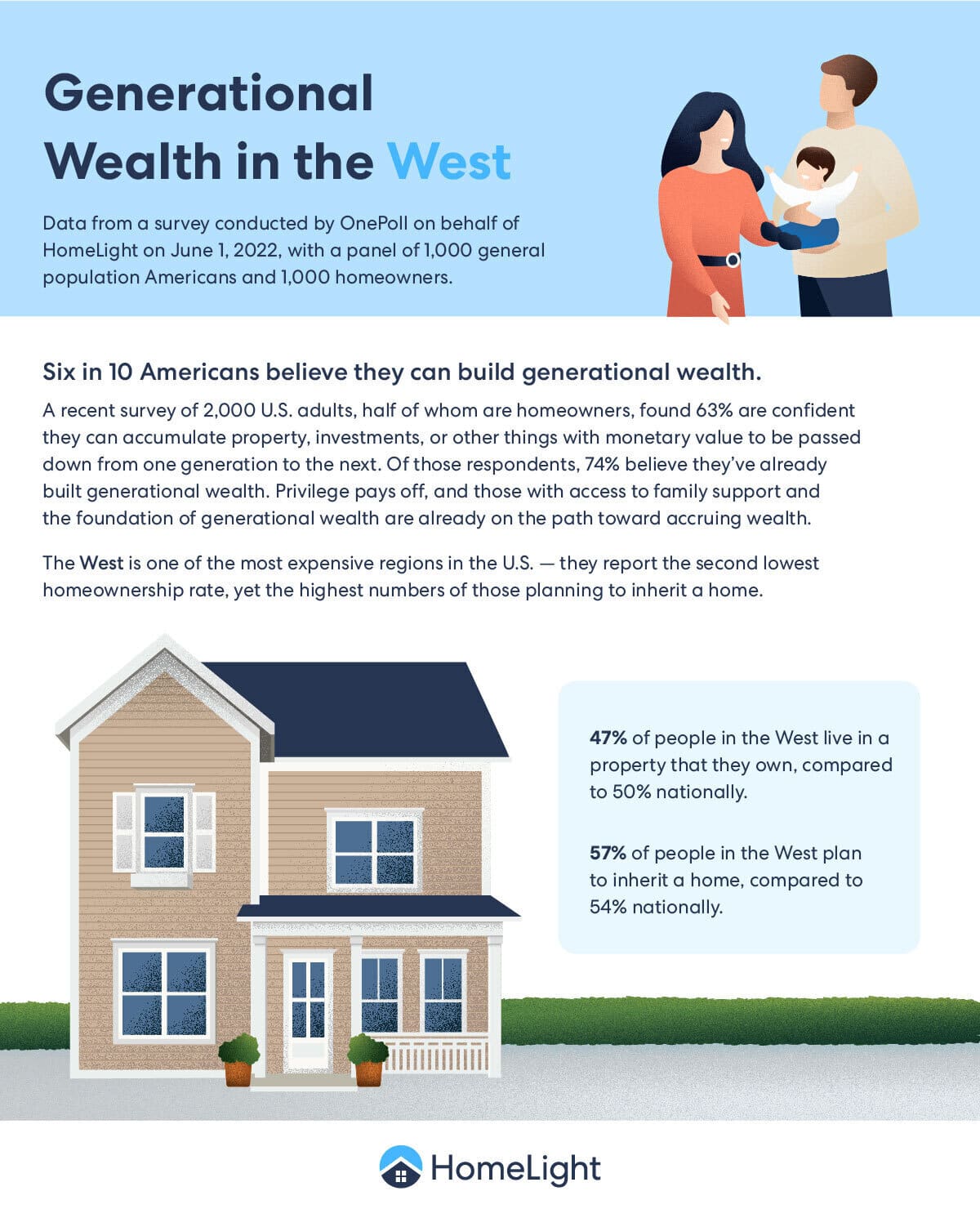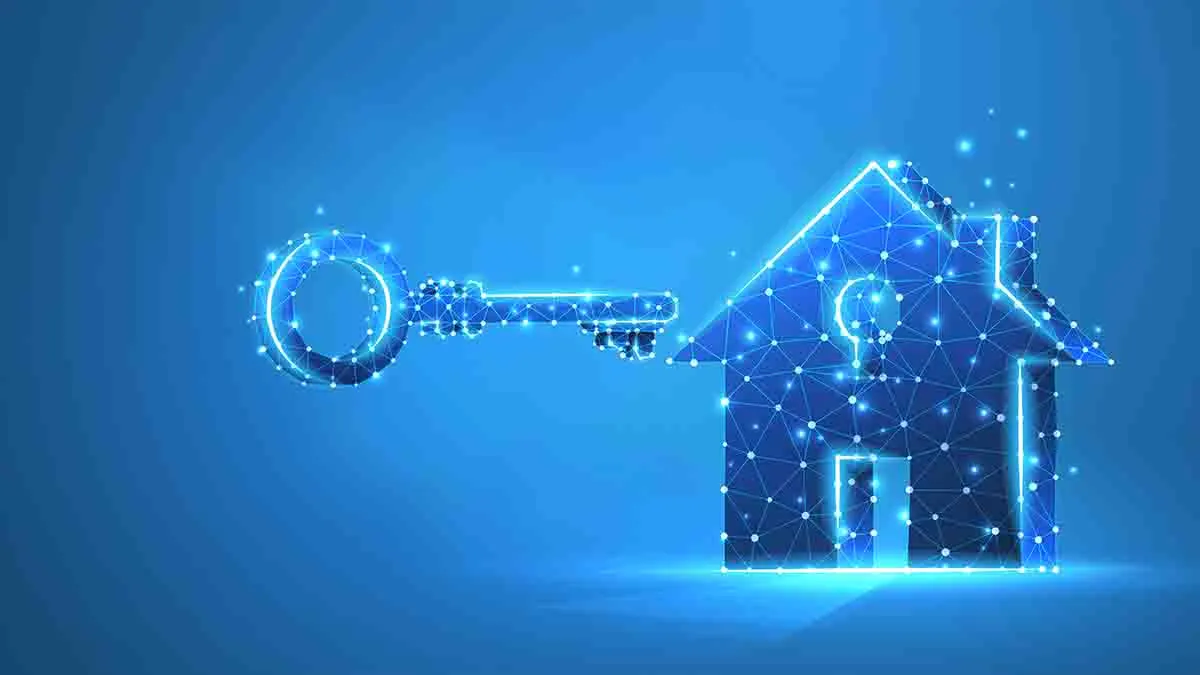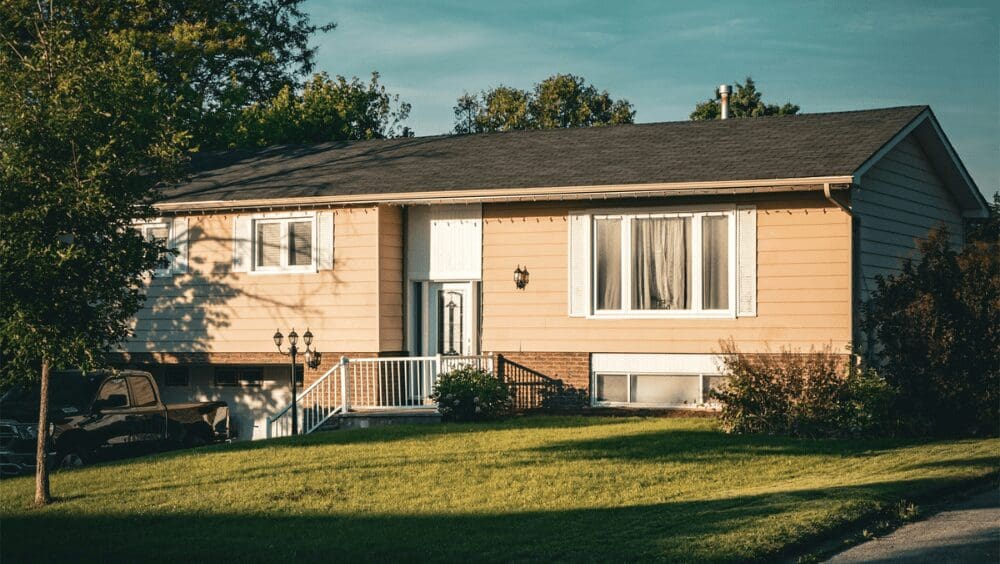If you own a home or are considering buying or selling a home, you may be wondering what makes property value increase. An increase in property value is called appreciation. Appreciation stems from a collage of factors influencing one another and ultimately coalescing to drive up values and determine how much profit can be made on a sale.
In this article, we discuss the factors that cause property values to increase over time and how to obtain a home value estimate.
What's your home worth today?
Tell us a little bit about your property and get a preliminary estimate of value in as little as two minutes.
Factors that cause property values to increase
- Location
- Supply and demand
- Real estate comps
- Size and usable space of your home
- Age and condition of your home
- Upgrades and updates
- Zoning regulations
- Interest rates
- A healthy economy
- Politics
- Disasters
- Generational shifts
To provide you with the most expert information, we spoke with Diana Benson, owner and operator of Benson Appraisals in Gilbert, Arizona; Carrie Freeman, a top Seattle agent with more than 19 years of experience; and owner / top agent Victoria Lance of Lance Real Estate Group in Georgia.
1. Location, location, location
You’ve heard that location is the biggest factor in home value. But what does this mean?
According to Benson, a home (the physical thing we live in) doesn’t actually appreciate in value. In fact, the physical characteristics of a home tend to depreciate as they age. It’s the underlying property (the land your home sits on) that is actually what’s gaining value. This is why location is key. And there are a number of things that affect whether the location is helping or hurting property values.
Community improvement
Historically, homes in urban locations with close proximity to employers, restaurants, shopping, and recreation hold high value. Community and neighborhood improvements such as the development of restaurants, parks, or mass transit can positively affect home value.
Community improvements that include the development of nature trails also boost home values. Studies have consistently demonstrated that being near urban green spaces can boost property values. The data is striking: properties close to parks and recreational areas often see a significant increase in value, sometimes up to 20% more than those without such green amenities.
Demand for rural homes
While home values historically grow faster in urban locations, there has been a recent upswing in rural home values. The rise in remote work and education options has stimulated home values in rural communities, as homebuyers are looking for more space (and at better prices) to work, relax, and play.
“We’re seeing a big trend in people moving out of the city to [locations] that are an hour or more away. They’re looking for a little space, a yard for the kids to play in, and more of a community feel. That’s brought the demand and property values up for homes outside of the city in a way we’ve not seen before. Prices outside the city are rising much faster right now than within the city,” says Freeman, who works with over 68% more single-family homes than the average agent in her Seattle market.
Decrease in crime rates
Additionally, homes in neighborhoods that have low crime rates tend to have higher values. As the crime rate in a neighborhood or community drops, home values rise.
Improved school performance
Data from the National Association of Realtors (NAR) reveals that 18% of recent homebuyers were influenced by the quality of their school district when selecting a neighborhood. Among buyers aged 25 to 33, that percentage jumps to 27%, and 37% for buyers aged 34 to 43.
When a school district performs well — as deemed by grades given by the state and ratings by greatschools.org — buyer demand rises in neighborhoods nestled in that district’s zone, driving up property values.
Occasionally, the state or responsible body will redraw school zones, shifting communities to new schools or redistributing them among existing schools. Homes reassigned to higher-performing schools may experience a boost in property value as the neighborhood becomes more desirable to buyers.
Homeowners Associations
Statistics show that properties that are regulated by homeowners associations (HOAs) have 5% to 6% higher property values than similar, non-HOA properties. HOA rules and restrictions are known for beautifying and maintaining neighborhoods, enhancing quality of life, and protecting property values. For this reason, when HOAs are brought into existing neighborhoods, home values climb.
Historic preservation
Contrary to popular belief, historic preservation can also improve the value of a home, despite the reduced renovation potential. Historic homes tend to have a higher property value.
2. Supply and demand
While the combination of improving real estate inventory and lowering mortgage rates in August results in a softer market, there are still supply and demand variations in each local neighborhood.
The basic law of supply and demand has a major effect on the housing market. Simply put, as the housing supply decreases or as demand rises, this creates an inventory shortage, causing home values to go up. A real estate inventory shortage means that there are fewer sellers than there are buyers.
When a community has less supply, a seller of a desirable home is “going to get top dollar for that home,” Lance says.
Complicating matters, there is also a shortage of the building materials and skilled labor necessary to build new homes.
3. Real estate comps
As the sale prices of comparable properties (known as real estate comps) in your community climb, your property value also climbs. Real estate comps are properties in your neighborhood that have similar age, square footage, materials, features, and condition to your home. Appraisers and real estate agents use comps as part of their process in determining property value or listing price.
When bidding wars occur in a neighborhood, homes sell for higher prices than previous selling prices of similar homes. This enables sellers to list their homes at higher prices and achieve even higher sale prices if bidding wars continue to occur.
Lance calls this domino effect “pushing the price point,” reflecting on her recent experience during a hot seller’s market:
“I sold a house at $368,000; then the same floor plan ended up selling at $385,000. And I just went on a listing appointment last week, same floor plan, same community — it was on a side street which is a little more desirable — and I told them to list it at $400,000.”
In this example, if the first home, which was listed at $368,000, had been listed a few months later, their property value would have increased, possibly selling for $390,000 or more, because of comparative sales.
Find Your Perfect Real Estate Agent
We analyze over 27 million transactions and thousands of reviews to determine which agent is best for you based on your needs.
4. Size and usable space of your home
The greater the usable square footage, the greater the home value in the eyes of appraisers and buyers. According to Benson, usable space is defined as the living space and in some locations, heated living space. The square footage of finished basements and attics are typically not included in usable space.
But don’t overlook the value of those additional spaces just yet! If you expand your home’s square footage with a home addition, finished attic, or basement, your property value improves to varying degrees. Especially if that additional space can be used for a home office.
“Here in the Seattle area, nine out of 10 homebuyers are remote tech workers, working for Google, Amazon, Microsoft, and they’re looking for homes with extra office space,” Freeman says.
In addition to usable space, home additions that include accessory dwelling units (ADUs) or mother-in-law suites may increase the value of a home by as much as 35%. Freeman suggests that ADUs are in higher demand post-pandemic as families open their homes to elderly parents and adult children. The potential for additional income is an added incentive for homebuyers.
5. Age and condition of your home
Because the physical characteristics of your home depreciate in value, a newer home will have a higher value than an older home. Home appraisers rate your home’s condition based on the amount and degree of repairs required. Benson indicates that a well-maintained older home with a sound foundation and structure and functional systems will also have a higher value.
Buyers in particular should take note of the home’s age based on the quality and design of materials and fixtures, such as hardware, tile, and energy-efficient features. When you maintain your home from a structural and aesthetic standpoint, you improve your property value.
6. Upgrades and updates
When done strategically, remodeling improves your home’s value and marketability. You might notice that a home that is similar to your home in age, size, and layout has been appraised at a much higher value than your home. The most likely reason is that the home has been upgraded. Homes that have been upgraded with modern features or layouts attract more homebuyers and higher offers.
Some remodeling projects that typically boost value and recoup project costs include:
- Landscaping. Lush landscaping raises property value. An attractive lawn alone has a return on investment of 217%.
- Mid-range kitchen remodel. Top agents surveyed by HomeLight report that a mid-range kitchen remodel adds on average $22,153 in resale value, recouping 85% of project costs.
- New systems. Updating or improving aging systems can increase energy efficiency and resale value. Some value-boosting increases include installing a new HVAC unit, replacing or repairing your roof, installing energy-efficient windows, and installing a new garage door.
- Minor fixture and paint updates. Updated fixtures and paint instantly update your home for a relatively small price tag.
7. Zoning regulations
How a home is zoned can affect the market value. Zoning is a method used by municipalities to establish local laws that regulate how property can be used within a geographic area. A property may be zoned for residential, business, or industrial use. Some more specific examples can include low-, medium-, and high-density residential zones.
While zoning restrictions are designed to protect the value of a home, population and job growth can create the need for residential expansion. When zoning laws are modified to allow greater future development, it’s often called upzoning. Upzoning can have mixed results, and the benefits are often debated. Studies have shown that upzoning can have a positive economic impact in its area.
8. Interest rates
When mortgage interest rates fall, home prices swell. Simply put, as owning and maintaining a home become more affordable, new homebuyers enter the real estate market. Existing homeowners who can afford to upgrade to a larger or more modern home also enter the market. The corresponding robust demand boosts home values.
9. A healthy economy
In much the same way, economic growth boosts home values. As employment rates increase, more individuals can afford to buy a home. When a healthy economy is accompanied by consumer confidence, more buyers enter the market, increasing demand and property values.
But it’s not a one-way street. An increase in property value stimulates the economy. Growing property values beef up wealth for homeowners, who in turn stimulate the economy with elevated spending. During a flourishing economy, homeowners have greater cash flow to reinvest into home maintenance, updates, and upgrades, further increasing home value.
10. Politics
Along the same lines, politics and the economy often go hand in hand. Government actions that deliberately or inadvertently stimulate the economy and build up consumer climate can cause market values to rise. This includes:
- Legislative action. Government policies created to reinvigorate a sluggish real estate market, such as lower interest rates and tax incentives, can boost demand and kick up property values.
- Political climate. Consumer confidence is often affected by the country’s political climate. Home sales typically drop during presidential election years as buyers are hesitant to move forward with any major financial decisions while the country’s future is uncertain. Post-election, home sales and market values tend to return to — and oftentimes exceed — their pre-election levels.
11. Disasters
When homes are destroyed by natural or man-made disasters, the value of unaffected properties rises as a result of a decrease in supply and an increase in demand from displaced homeowners. In particular, property values of unaffected adjacent communities tend to rise. Homeowners accustomed to regional natural disasters are prepared to pay higher homeowner’s insurance rates to remain in the area.
Both natural and man-made disasters can spur community development, such as the building of a higher sea wall. After a disaster, sellers may make improvements to make their home more attractive to buyers.

12. Generational shifts
Over the past few years, data from the National Association of Realtors has shown that millennials make up a growing portion of homebuyers, and while they still command the largest portion of the homebuyer pie over any other generation, that portion is shrinking — from 43% in 2022 to 28% in 2023 and 21% in 2024. As these buyers are looking for homes, they’re prioritizing convenience to their offices, quality of the neighborhood, and affordability.
Bottom Line
There are many factors that cause real estate values to increase, from the development of community features to the entrance of younger homebuyers in the market. How these factors affect your property value depends on timing and location.
Check your property value now
Wondering how much your home has appreciated in value? Find out how much your home may be worth with HomeLight’s Home Value Estimator. This free online service uses information from multiple sources to create a real-time home value estimate based on current market trends. You can also reach out to a top real estate agent who has experience with property valuation and appraisal in your local market.
A quick (and free) way to check your home value
Get a preliminary home value estimate in as little as two minutes. Our tool uses information from multiple sources to give you a range of value based on current market trends.
Header Image Source: (Deepak DK/ Pexels)
- "The Green Premium: How Urban Green Spaces Elevate Property Values," LynkMe (March 2024)
- "2024 Home Buyers and Sellers Generational Trends Report," National Association of Realtors (April 2024)
- "Understanding School District Ratings in Your State," New Home Source (September 2023)
- "Study: Homeowners Associations Are Booming," NAR, Melissa Dittmann Tracey (March 2024)
- "Who draws the lines?," All About Redistricting Loyola Law School
- "Study: Homeowners Associations Are Booming," National Association of Realtors (March 2024)
- "Historic Home: A Complete Guide To Owning One," Quicken Loans (February 2024)
- "Construction Industry Report Predicts 2023 Materials Pricing," ForConstructionPros.com (February 2023)
- "Should I Add an ADU to My Home? | 2024 Guide," The Mortgage Reports (May 2024)
- "Landscaping Projects That Do and Don’t Increase Your Home Value," Angi (October 2023)
- "What Is Upzoning?," Planetizen (July 2024)
- "How Elections Affect Home Sales," PadPath - Your Home, Your Way! (April 2023)



















 English (US) ·
English (US) ·